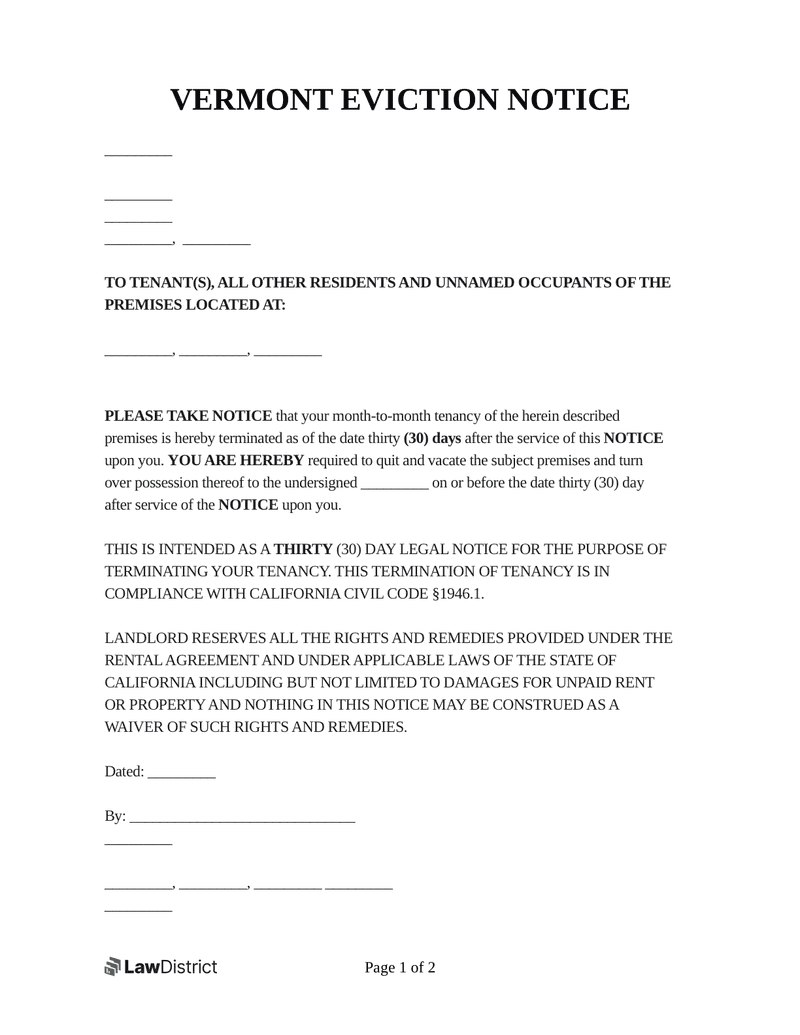To evict a tenant successfully in Vermont you must present them with the appropriate eviction notice for the circumstances. This allows you to conform to the laws in Vermont by providing a legally valid reason for the eviction and the correct amount of notice necessary under VT statutes.
Choosing the right kind of eviction notice is key to removing a tenant quickly. If you don’t follow the legally mandated rules, you may have the eviction overturned or delayed by the local courts.
As seen below, there are a few different options in Vermont when completing an eviction.
14-Day Notice to Quit (Non-Payment)
This type of eviction notice gives tenants 14 days to pay the rent or leave the property if they fail to pay within the contractually agreed time (§ 4467(a)). If the tenant still doesn’t pay or vacate after the notice period ends, the landlord can take them to court.
The eviction notice can be given as soon as the rent is late according to Vermont law (§ 4455). However, if the lease agreement provides any rental payment grace periods these must be followed as written.
14-Day Notice to Quit (Illegal Activity)
If the tenant is found to be committing illegal activity on the property the landlord can present them with a VT 14-Day Notice to Quit (§ 4467(b)(2)). This is an incurable notice which requires the tenant to remove themselves from the property within 2 weeks.
30-Day Notice to Quit (Non-Compliance)
In situations where the tenant violates the terms of the lease, landlords can issue them with a 30-Day Notice to Quit for Non-Compliance (§ 4467(b)(1)). This gives the resident a chance to correct the violation within 1 month, or to leave the premises.
This can also be issued as an unconditional notice, giving the tenant no option to correct the break in the terms. However, this is usually only done when more serious breaches of the contract occur.
60-Day Notice to Quit (Month-to-Month)
60 Day-Notice to Quit documents are used to evict month-to-month tenants who have lived on the property for under 2 years (§ 4467(c)(1)) without providing any given cause. This allows the landlord to inform the tenant that they must vacate the property within 60 days.
90-Day Notice to Quit
90-day eviction notices are used to terminate longer tenancies that last over 2 years (§ 4467(c)(1)). This gives the tenant 3 months to move out of the property before the lease ends.
